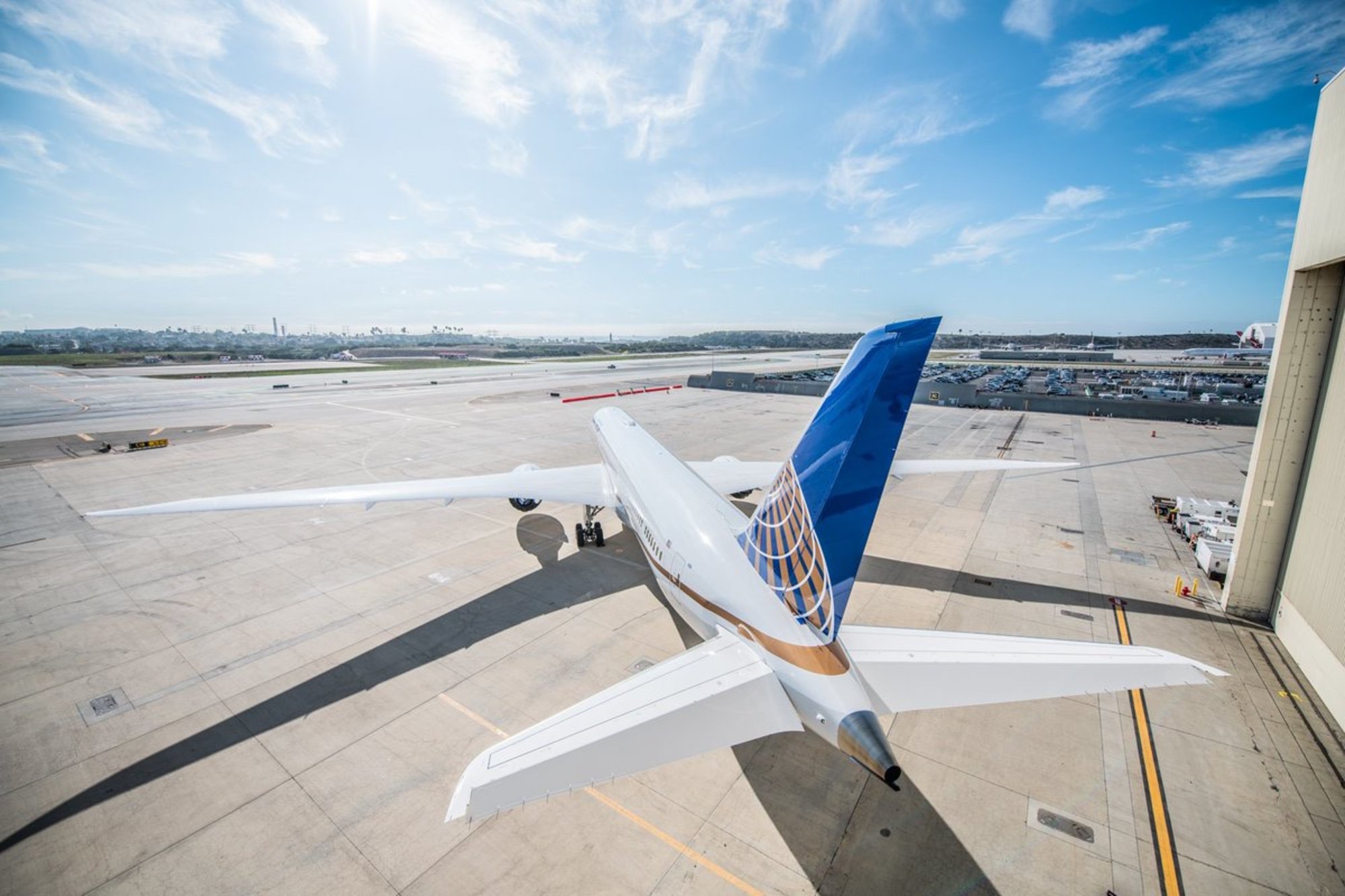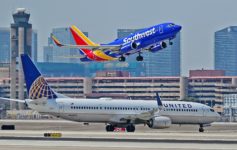As the future of the 737 MAX remains shrouded in uncertainty, United Airlines is pushing Boeing for further insight on its 797 program.
Asked about it during an earnings calls on Wednesday, United Chief Financial Officer Gerry Laderman said:
We would like to see some clarity so that we can make the choice. But we do have a little bit of time.
The choice Laderman is referring to is the choice United faces to replace its aging fleet of 757 and 767 aircraft. United has 76 757s and 54 767s, a total of 130 aircraft. While we will see these aircraft flying for United for many more years to come, they are aging and also not as fuel efficient as modern aircraft.
Looking ahead, United has already asked Airbus and Boeing to propose a replacement. Airbus has already presented its answer: the A321XLR. That plane will have a range of 4,700 nautical miles, more than any narrowbody aircraft.
Meanwhile, it is unclear if Boeing will even compete. A “new midmarket airplane” (NMA) is the official codeword for the new aircraft, though analysts have dubbed it the 797. Boeing is still studying the business case for the NMA, but has shifted the bulk of its attention to the troubled 737 MAX program.
In fact, in what may be a bad sign for the NMA program, Mark Jenks was moved from heading the 797 to heading the 737 MAX only last week. It is still unclear who will step in to lead the 797 program, but Boeing would be wise to recognize that time is of the essence.
American Airlines already ordered 50 A321XLR jets. These aircraft will replace its own 757-200 fleet (34 aircraft). Delta, with a combined 193 757 and 767 aircraft in its fleet, may also defect to Airbus if Boeing does not come up with a plan fast.
CONCLUSION
The 737 MAX problems for Boeing reach beyond the 737 MAX itself. With the manpower now redirected into fixing that troubled division, other programs…like the NMA…are in a pensive waiting mode.
> Read More:United Will Cancel 8,000 More Flights Due To Boeing 737 MAX
image: United





Boeing could put bigger engine’s on the 757 frame, rename it, and call it a day.
The tooling for that frame is long gone.
New, bigger engines is what got Boeing into the 73Max mess in the first place. Hanging giant engines on a wing designed in 1960 for skinny cigar-tube Pratts was a cheap and cynical answer to the Neo. Got what you paid for, B. If the Max ever flies again I will avoid it. I think they should all be scrapped.
The MAX debacle could result in Being lagging behind Airbus for 5-10 years. They are seriously going to feel this in many ways including new development like the 797, which will be delayed as the engineers try to retool the MAX. Boeing will come back. But the pain will be real for years.
@Stuart
Unfortunately, you’re correct… I hope the impact is only 5-10 years though… the MAX issues aside, if they miss this NMA opportunity, they could feel the pain a lot longer in loss of market share.
What I don’t understand is airlines have been looking for a 757 replacement for years… many years now… Did Boeing and Airbus think everyone was going to just buy bigger or smaller and call it a day?
From what I hear, the NMA program involves a wide body that’s just a bit smaller than a 787-8. If that’s true, how stupid can Boeing be? Airlines want a replacement for the 757 but with more advanced performance and economics. Not just another wide body that isn’t worth bothering with. The economics of a wide body aren’t the same as those of a narrowbody airliner. If airlines wanted such a vehicle, they’d be scrambling to order the 787-8. If anything, that’s a slow seller. Meanwhile, Airbus is absolutely eating Boeing’s lunch with the new 320 series.
What happened to Boeing, anyway? When I was a kid, that company was to be revered. Now, they are an embarrassment.
In its day the 757 was a market leader and a really pleasant plane to fly on as a passenger but Boeing absolutely failed to develop either that or the 767. In terms of efficiency both are now way behind the current generation of aircraft and Airbus are sitting with the A321 NEO in its various forms and the A330 NEO in two options alongside the A350 all of which fill the gaps nicely.
Surprisingly there is now even going to be an A319 NEO which will compete with the A220 and development of the A220-500 is still being considered.
I do wonder if Boeing regret ever embarking on the MAX project which I doubt they can ever do enough with to satisfy the safety experts. Every time they seem to get near another flaw rises, seemingly bigger than the last one.
I agree with all you folks, but still I stand behind the Boeing Company. I’ve been flying on Boenig aircraft for over 50 years. With the economy starting (slowly) to recover, thank you, Mr. Thump…… and maybe a realignment of the design team a little bit at Boeing, the company will again be the world’s number one airplane manufacturer.
It’s a cycle that most major companies go through. Just give them a chance they’ll get it right. My favorite plane is still the 747-400. The 777 is also a great plane. I also like the MD11 from the old Mc Donald Douglas Aircraft Company. There are not to many of them left flying commercial flights. I know the cost to operate the last 3 that I remarked about cost more to fly but they are all rugged and a pleasure to ride on. In closing, I’ve flown on 707’s, 727’s, 737’s, 747’s, 757’s, 767’s, 777’s and 787’s in all variations.
Thank you so very much,
Jon
Once those responsible for the series of bad decisions re 737MAX from whenever it was decided to launch a 21st century aircraft on the cheap using a derivative version of an aircraft that began flying in 1967 – and yet still relies on designs, engineering concepts, and even its actual operating mechanicals (for example, pulleys and cables instead of fly-by-wire; and where a key operating feature itself which must be turned/cranked manually has been identified as a problem that must be resolved as one of several items on regulators’ checklist before recertification/re-entry into service) instead of designing and building an all new 21st century model that featured 21st designs, engineering concepts, and most importantly, 21st century materials and technologies, are gone, and replaced by those completely unconnected with the failed company, McDonnell Douglas, whose own demise was caused by its failed strategy relying on stale, 1960s derivatives of its DC-9s and DC-10s – just as it did with the long ago obsolete 737 for the MAX.
Frankly, expectations that the 737 MAX can be salvaged by the same people in the C-Suite and Boardroom that created the problems now faced at Boeing itself is as unrealistic as:
– the original fantasy that an aircraft that began flying more than 50 years ago, and whose underlying designs, engineering concepts, and even some of its operating mechanicals, dates back even further to Boeing’s 1950s vintage 707 could morph into an aircraft to meet 21st century missions using much larger, more powerful, 21st century high bypass engines to fly long haul segments more than twice as long as envisioned by engineers when the underlying aircraft platform was designed.
Would anyone expect that simply replacing 21st century technology engines in classic/vintage cars designed 25, much less 50 or more years ago, would be nearly as efficient as going out and buying a car that in its totality was designed contemporaneously?
Of course not!
Sure, the comparison is not 100% identical; and sure this oversimplifies things a little.
But, the point of this illustration remains valid:
How likely was it going to be that creating a “Frankenstein-like” plane where many aspects of its designs, engineering concepts, and worse yet, some of its actual critical operating mechanicals literally dates back to the dawn of Jet Age (practically the Stone Age in aviation “years”), while at the same time hoping (on a wing and a prayer!) that slapping a pair of 21st century high performance engines combined with repeated fuselage stretches that are so long the plane cannot even use certain types of airports such as Chicago’s Midway, or some “hot and high” airports around the world because its designs are so dated, the biggest models cannot operate at these airports?
Ridiculous!
– the whole “let’s start a trade-war with Canada” fiasco (in a desperate, not to mention epic fail to kill Bombardier’s C-Series that likely will be viewed for generations to come as one of the most ill-considered decisions given the outcome where NOT only did Boeing FAIL to cripple/kill Bombardier’s C-Series while it was being made by a badly undercapitalized rival, and was a slow seller as airlines and leasing companies feared being stuck with an “orphan plane” like Fokker-100s were, or before that, BAC-111s, Sud-Caravelles, etc. – it instead allowed its well financed rival, Airbus, to gain control over the new model, along with all of its engineering and other technological patents AND a new final assembly line that will allow for DOUBLE or more production for (wait for it) $1.
Wow! Talk about the mother of all FAILS.
For sure, that one is IT!
Call it hubris, greed, arrogance – or all of that.
Those responsible for a FAIL with an outcome that spectacularly bad NEED TO GO!
– Finally, there’s the entire body of published reports of what the company knew, and when, followed by decisions made to withhold/conceal from airlines, regulators and pilots critical safety related information pertaining to the model’s defects that may have been determinative factors that resulted in the two fatal crashes where 346 passengers and crew, plus a diver searching for the “black boxes” after the Lion Air 737-8 MAX crashed, or a total of 347 lives were lost.
So, for these, among other issues, I believe Boeing itself, and the corporate culture/ethics (or lack thereof)/business strategies MUST be fixed before the 737 MAX can be fixed.
Indeed, expecting the same people who already got so much wrong for this model to be able to get things right now is probably every bit as fantastical and unrealistic as say, taking an antiquated aircraft from 50+ years ago, and seeking to push it beyond the max of what the passage of time and an underlying platform designed in a long bygone era would ever allow for to begin with.
In short, be it “fixing”/salvaging the 737MAX or launching an NMA, the first order of business for “McBoeing” really must be FIXING BOEING itself – starting with a very thorough housecleaning that purges the company completely from the taint of the failed company, McDonnell Douglas, which somehow managed to takeover Boeing with Boeing’s money, and has since done to Boeing, what it did to itself: make a series of miscalculations and bad decisions that for McDonnell Douglas led to its demise.
Now Boeing must decide if McDonnell Douglas’ (now) thrice failed attempts to rely on derivatives of aircraft designed in the 1960s as the DC-9, DC-10 and 737 all were is anywhere near as successive as OG Boeing’s legacy is for its:
– revolutionary in its time 707;
– incredibly successful and best selling of its time 727s;
– breathtaking engineering masterpiece 747s;
– dual launched 757s and 767s;
– it’s best selling (A340, A380 and even 747 killing) 777s that now dominate long-haul flights around the world;
And if it wants to be known as the also ran “McBoeing” who became second fiddle to Airbus (assuming it avoids bankruptcy and outright failure) for a generation or more to come?
Or if it wants to rediscover its legacy of innovation and success that its 737 antique flying machines are anything but?
Paging Gordon Bethune…(or a proven transformational leader like him who can clean house and begin the restoration of BOEING and ending “McBoeing”)